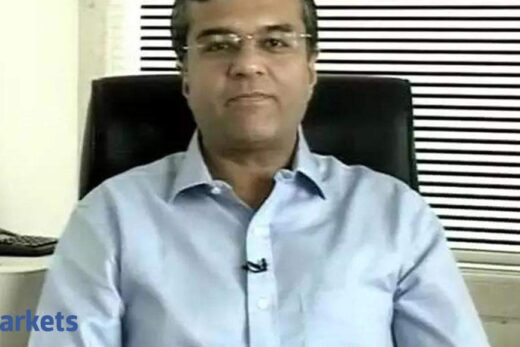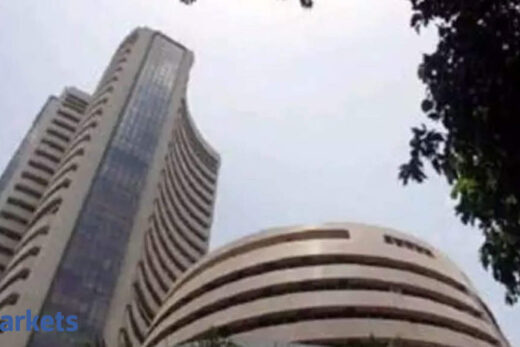Are markets reaching the zone of complacency or is there a fundamental tailwind which is driving the market? This market is not reacting to what is happening to inflation and it is ignoring the uptick in commodity prices?
We need to realise a few things. This time when the Covid crisis hit, it was very intense but short. At the beginning, people knew that would be the pattern and IIT Kanpur modelling predicted that quite early in the day. In the life of a typical company, if one takes out even a quarter of cash flows, that damages valuation. The damage to value, which is the stock price, is 0-2% in case of higher staples. In the lower interest rate situation that we are in, a percent drop in interest rates takes the value up by 20%. So a 22% increase in 21 EPS over 20 means, markets still have some room to go up.
Given the tailwinds, we are positive now. The problems are receding. The next problem of interest rate increases, lower liquidity is a few months away. Lower liquidity itself is a few months away, interest rate increases are at least a year away so that is the sense. The other issue is inflation. This time around, every country of the world is squeezed in terms of government finances. Inflation will help blow out that problem. So, whatever may be said, people will want to do things later than otherwise and that needs to be recognised as well.
As we speak, the inflation base is not very favourable on a global basis. The base starts to get more favourable as we go forward. The real uptick in inflation starts after October. In my view this is a buy-on-dips market. The 4-5% dips are a great dip to buy into.
Are you relooking at metal stocks because metals are where all the action and excitement is?
We have put out our deliverable to our clients which is preservation of capital and growth of capital and towards that, we invest in businesses which can make good returns on their business on a very sustained basis. Look at ROC as a parameter to judge that and the ability to pass on input price changes over a period of a quarter or two and continue to grow strongly over a long term of three to five years.
Metals do not qualify in this situation. Organic growth is just about the growth of the economy itself and more return may intrigue. Earnings are more determined by prices which can be very feeble rather than the organic growth and volumes. So it is very difficult for us to go that path unless it is a converter kind of a company but for a very long time, we stayed away. Now maybe that pack is already at the peak-end of its sustainable valuations. An easy liquidity kind of a situation lowers the price of putting up a capital intensive industry. This is an industry which takes four to five years to be put up and in between, if you have interest during construction at 12%, the replacement cost is higher instead of getting it at 8-9%. So one has to take that into account as well and not look at EPS and replacement costs and add two-three years of good cash flows to the overall value. The upside from these levels is not much to our mind.
Momentum is building up in the the broader markets. A lot of themes have emerged — be they building materials or agri related. What would you suggest going forward? How much should one really diversify?
My sense is the breadth of the market will continue to be good. There are a lot of positive policy tailwinds. Import duties are being increased wherever there is damage to Indian manufacturing; PLI schemes are being rolled out; ethanol policy has been created which gives sugar stocks three years of great visibility of revenue profit growth with good ROCEs.
What happened to let us say microfinance some time back where the cap on lending may be removed. It would be a positive development. It probably would increase the ROE of business a tad. So we are looking at very positive policy making. The broad market results are better than the narrow market results and it could continue for some time. Hence the broader market should be expected to remain good.
Among sectors, pharmaceuticals — both export-oriented and domestic — will continue to do well. They have been consolidating for some time. Maybe their turn would come now. The other space is financials. In India, financials have been hit by various things apart from the business downtake because of Covid. Globally, we have seen financials come back very strongly as the economy opened up. India has behaved a tad differently and that leaves a considerable amount of upside to this space.
How would you slice and dice the financial pie?
One, if you want a lending business, look at businesses which do non-standard lending to SMEs and smaller businesses. The larger ticket entities do the more standard lending. Automation will probably take away margin sooner than later. If you do easy lending, good pipelines, good transmission lines, roads, etc, all of that will be InvITised or there would be REITs. So for a large corporate kind of lender, there are challenges. That means, one would be left with more risky, volatile earning stream kinds of businesses and it is better to avoid that. Also, they will continue to face competition from even the tech companies. SME and smaller is where one should be focussed on.
Though there is stress in SMEs and smaller space due to Covid, it will be temporary. People will pay back when their incomes are restored. Their incomes would be restored over the next three to six months as the economy comes back. Projections show FY21 Indian economy would be a percent or two higher than pre-Covid times which means more would be employed now and people who have lent to such a section would probably get their money back. So it may be a timing mismatch. You may have an NPA but a lot of it will come back. It would not be loan losses. So that is the part of the market one should focus on.
The other easy way of doing it is look at banks which have subsidiaries like mutual funds, life insurance, general insurance, credit card, etc, because over time, a lot of the value goes to these businesses and a pure lender will find it increasingly difficult to compete in the market place with a lender who has all of these businesses as in subsidiaries.
We like NBFCs. It is a sea change from IL&FS space. There have been consolidations and it has benefited the better quality businesses and availability of money is very good. So lending may have been a bit of a problem. Everybody is conservative in these difficult times but overall, the construct is very good. Once again, keep focus on NBFCs focussed on SMEs and retail.
What happens to the traditional favourites — IT and pharma?
Both of them would have good periods in terms of earnings going forward maybe 2022 over 2021. Both of the spaces will provide a lower delta versus other spaces because these spaces were normal versus others. In fact, they may be better than usual in FY2021. But barring that, if you are looking at continued business in FY2024, would that be better than a pre Covid scenario? The answer is yes. This is one pack where valuations should be higher significantly vis-a-vis pre Covid days but the delta would be lower, given that they had a good period in last fiscal.
So are we looking at pharmaceuticals? Yes, we have increased our weightage in the chronic therapy focussed businesses and in larger names in IT. Unless you go to very small names, the larger names are trading at similar and in some cases may be lower valuations versus midcaps. And larger names will be able to give you much more steady growth in earnings versus midcaps which may give stellar growth in a few years but they average out at lower than large cap growth.
So given the valuations and given how various stocks are positioned, we believe one should be focussed on the larger cap IT names at this point in time. The business momentum will continue to be strong in IT as well. Businesses that have seen average growth between FY2010 and FY2020 would see at least 50% higher growth going forward. On an increased base, that means a lot and one should stay positive there.
If someone asks you how to get rich at these levels, what would you tell them?
There are two parts; one, the easy money making bit is over. Now we are on the index looking more at compounding.
Secondly, maybe the broad market will continue to do better than the narrow market and we will have an earnings momentum which will support that. So be focussed more on the mid and the smaller end of the market.
Third, we are in a period wherein returns from debt would be very small. People are worried about interest rate increases. On a 2-3% yield on overseas bond assets, a 0.25% increase in interest rates make up a return of 1.6%; 0.5% increase in interest rates takes away 3.25% returns.
For a long-term investor, allocating assets to debt is going to give very little returns over the next one to two years. That means if you want double digit returns, either shift to equity or go for bonds but lower return expectations.



